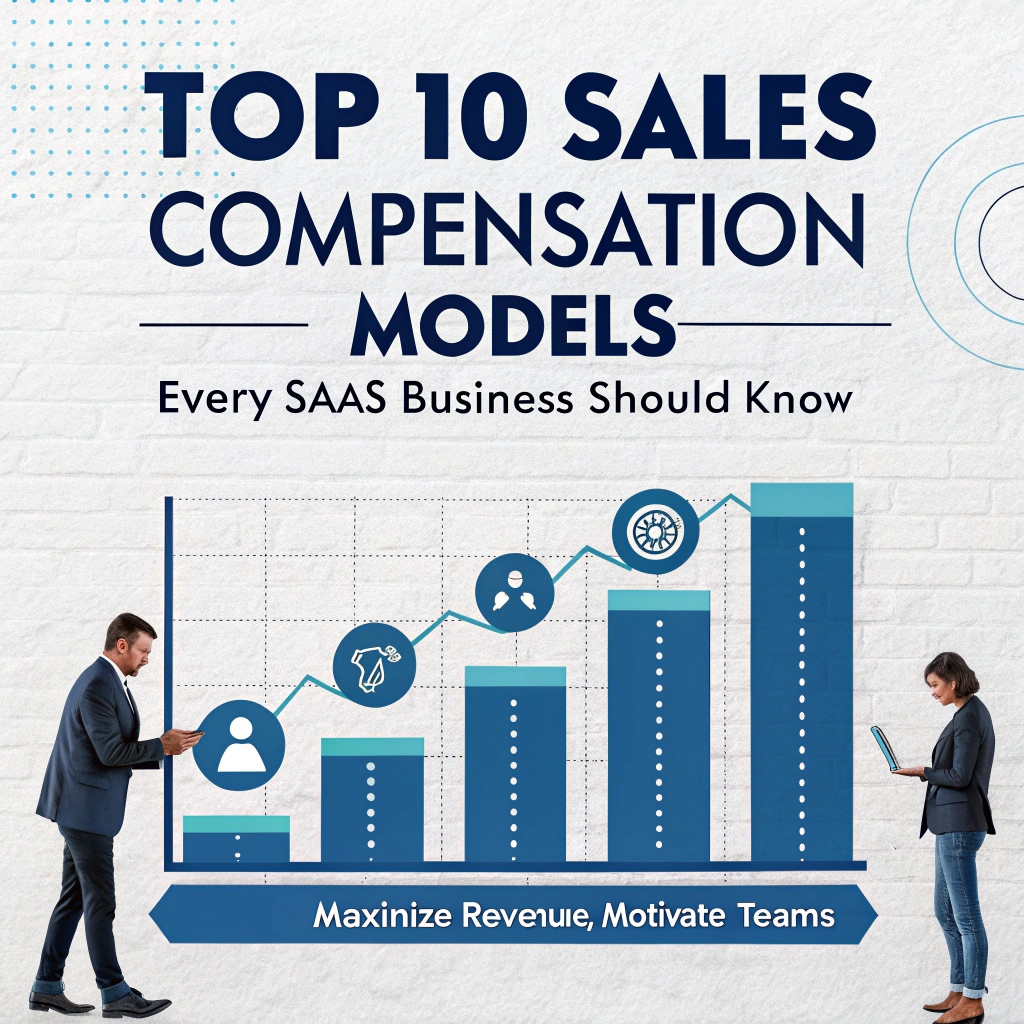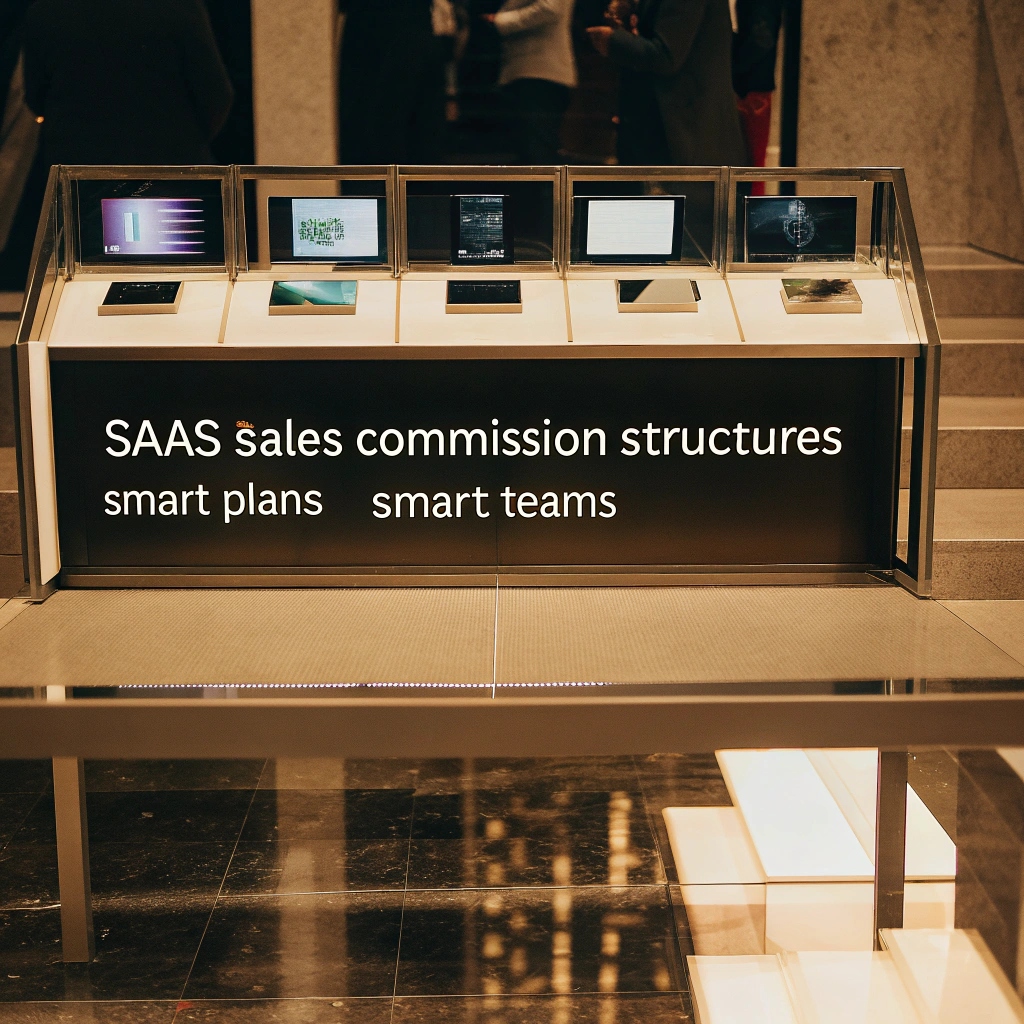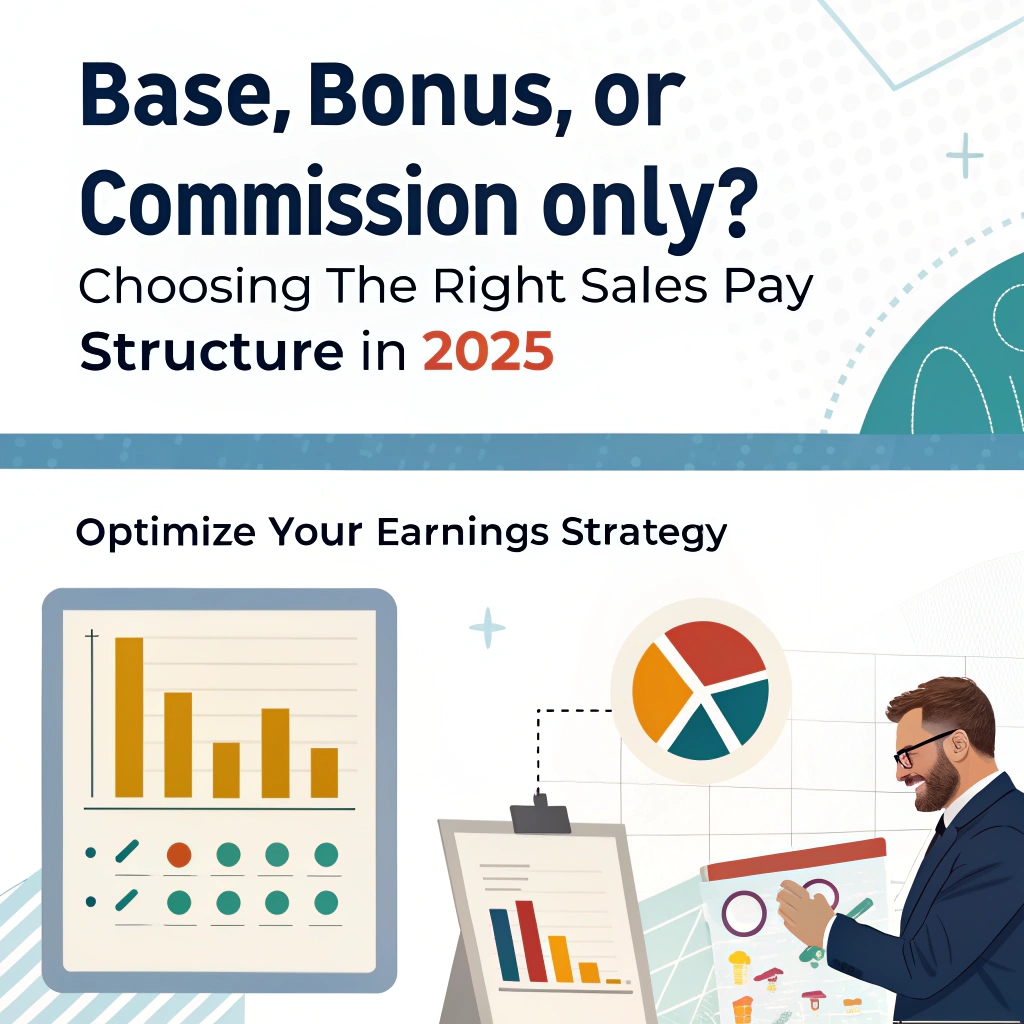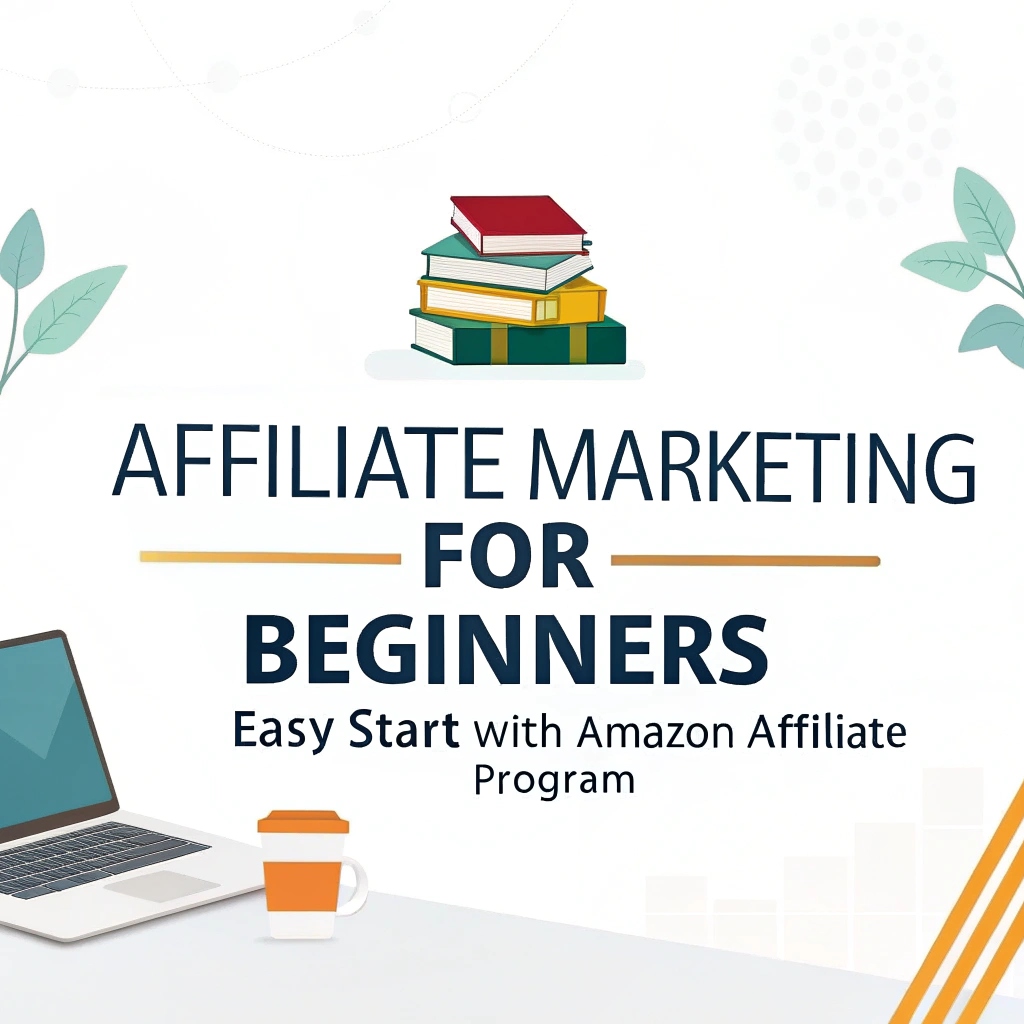
In the fast-paced world of SaaS, your product might be top-notch, but if your sales team isn’t motivated, aligned, or rewarded properly—you’re leaving money on the table. One of the most important levers for SaaS success? 👉 Your sales compensation model. Yet, most businesses either oversimplify it or make it so complex that reps can’t even calculate what they’ll earn. So, what’s the sweet spot? In this ultimate guide, we’ll break down the Top 10 Sales Compensation Models every SaaS business should know. Whether you’re an early-stage startup or scaling at Series B and beyond, there’s a model here to match your goals, product, and team.
Why SaaS Needs Specialized Sales Compensation Plans

SaaS is unique. You’re not just selling a product—you’re selling subscriptions, retention, and lifetime value (LTV). Unlike traditional one-time sales, SaaS requires your sales team to:
- Build long-term relationships
- Focus on renewals
- Sometimes close low-ticket deals with long-term value
💡 That means your sales compensation plan must do more than just reward for closing a deal—it must reward for bringing in the right kind of customer.
Let’s Dive In: Top 10 SaaS Sales Compensation Models

🔟 Straight Commission Model
How it works: The rep earns only when they close a deal—usually a % of the deal value. Use case: Early-stage startups with limited cash, or commission-only sales teams. Pros:
- Motivates top closers
- Zero upfront cost to the company
Cons:
- High-risk for reps
- Doesn’t suit long sales cycles or team-based selling
Ideal for: Solo SaaS affiliates, side hustles, micro-SaaS projects
9️⃣ Base Salary + Flat Commission
How it works: A stable salary plus a fixed percentage (e.g., 10%) per deal. Use case: Most common for inside sales teams. Pros:
- Financial stability + performance motivation
- Easier to attract quality talent
Cons:
- May cap motivation if commission is too low
Ideal for: SaaS teams in scale-up mode
8️⃣ Tiered Commission Structure
How it works: The more a rep sells, the higher their commission rate becomes. Example:
- Up to $50K/month: 5%
- $50K–$100K: 7%
- Above $100K: 10%
Pros:
- Rewards overperformance
- Encourages reps to go beyond targets
Cons:
- Can get complex to calculate
- May create tension among peers
Ideal for: Mid-to-senior level SaaS reps
7️⃣ Revenue-Based Commission
How it works: Commission is paid based on the total revenue from the deal, often MRR × 12 for annualized revenue. Example: 10% of annual contract value (ACV) Pros:
- Aligns with revenue goals
- Simple to track and explain
Cons:
- Doesn’t account for profitability or customer stickiness
Ideal for: High-volume SaaS businesses with consistent pricing
6️⃣ Profit-Based Commission
How it works: Commission is based on the profit margin rather than the revenue. Example: If profit margin is 60%, reps earn 8% of profit—not sale amount. Pros:
- Encourages reps to sell higher-value, lower-cost deals
- Prevents discounting just to close
Cons:
- Can demotivate reps if not clearly explained
- Needs access to cost data
Ideal for: Complex SaaS deals with varying margin structures
5️⃣ Milestone-Based Bonuses
How it works: Reps earn bonuses when they hit defined KPIs—like onboarding completion or reaching customer success goals. Example:
- $500 for closing
- $250 bonus if the customer activates within 14 days
- $500 more if customer renews after 90 days
Pros:
- Encourages high-quality deals
- Aligns sales with customer success
Cons:
- Needs cross-department coordination
- Delay in full payout can demotivate reps
Ideal for: PLG (Product-Led Growth) or onboarding-sensitive SaaS companies
4️⃣ Accelerator Model
How it works: Reps who exceed quota get a higher percentage for each additional sale. Example:
- Up to 100% quota: 8%
- 100%–120%: 10%
- Above 120%: 15%
Pros:
- Drives elite performers to push harder
- Encourages quota smashing
Cons:
- Budget-heavy if not monitored
- Demoralizes underperformers if there’s no safety net
Ideal for: Competitive SaaS sales teams, especially in enterprise sales
3️⃣ Draw Against Commission
How it works: Reps are given an advance (draw) each month. They earn commissions to “repay” the draw before earning beyond it. Example:
- Draw = ₹40,000/month
- Rep earns ₹50,000 in commissions
- ₹10,000 is the payout that month
Pros:
- Financial stability for reps in long sales cycles
- Helps onboard new reps without paying full base
Cons:
- Complex to track and explain
- Risk of reps never exceeding the draw
Ideal for: High-ticket SaaS products with long closing times
2️⃣ Residual Commission Plan
How it works: Reps earn monthly commission as long as the customer stays. Example: 10% of MRR every month for 12 months Pros:
- Incentivizes customer retention
- Builds long-term motivation
Cons:
- Expensive if not capped
- Reps may grow complacent if they’re “living off” old deals
Ideal for: Subscription-based SaaS with low churn and recurring billing
1️⃣ Team-Based Commission Pool
How it works: Instead of individual payouts, the entire team earns a shared bonus based on team performance. Example: Sales team hits $1M ARR goal → $100K bonus pool → split based on contribution weight Pros:
- Encourages collaboration and mentorship
- Reduces “lone wolf” culture
Cons:
- Top performers may feel undervalued
- Needs careful distribution formulas
Ideal for: SDR + AE + CSM teams, or PLG SaaS companies with a shared pipeline
How to Choose the Right SaaS Compensation Model

There’s no one-size-fits-all. Here’s a decision framework:
| Company Stage | Recommended Models |
|---|---|
| Pre-Seed / Bootstrapped | Straight or Draw-Based |
| Seed – Series A | Base + Flat or Tiered |
| Series B+ | Accelerators + Milestones |
| PLG SaaS | Residual or Milestone-Based |
| Enterprise SaaS | Profit-Based + Team-Based |
Pro Tip: Combine 2–3 models for a hybrid structure that balances stability, motivation, and growth.
Key Metrics to Align With Sales Compensation
Don’t build your plan in a vacuum. Align it with key SaaS metrics like:
- MRR / ARR (Monthly/Annual Recurring Revenue)
- Customer Acquisition Cost (CAC)
- Customer Lifetime Value (CLTV)
- Churn Rate
- Sales Cycle Length

A rep who closes a $1,000/month customer with a 2-year retention value deserves more than one who sells a churn-risk client.
Tools to Automate and Optimize Compensation
Tracking commissions manually in SaaS is a nightmare. Automate it with these tools:
- ✅ Spiff – Real-time dashboards, Slack notifications
- ✅ QCommission – Deep customization, scalable
- ✅ Xactly – Enterprise-grade, great for forecasting
- ✅ CaptivateIQ – Built for SaaS, easy for finance + sales ops
Integrate with CRMs like Salesforce, HubSpot, and Zoho for seamless workflows.
Mistakes SaaS Companies Make with Compensation
❌ Focusing only on closing, not retention ❌ Paying the same for high and low-margin deals ❌ Ignoring onboarding time or churn risk ❌ Delaying payouts ❌ Not involving Customer Success in the comp conversation
Real Story: How a SaaS Startup Doubled Its Sales With a Hybrid Plan
Company: B2B SaaS for HR tech Problem: Flat commissions led to lazy upsells, poor retention

Solution:
- Switched to base + tiered model
- Added onboarding milestone bonuses
- Gave 3-month residual on retained accounts
- Implemented Spiff for commission transparency
Result:
- 2.1x increase in ACV
- 40% improvement in retention
- Sales team morale shot up
👉 Lesson: The right plan does more than pay—it inspires.
Final Thoughts: Compensation Is Culture
A great sales compensation model doesn’t just drive revenue. It builds your culture, retains your talent, and aligns your sales goals with your business vision. Start simple. Stay transparent. Evolve with growth.
Quick Checklist for Your SaaS Sales Comp Plan
✅ Align with MRR / ARR goals ✅ Reward for both quality and quantity ✅ Use a mix of base, variable, and bonus ✅ Automate payout tracking ✅ Communicate everything clearly
✨ Bonus Quote to Remember:
“In SaaS, every sale isn’t just a win. It’s a relationship. Your compensation plan should reward that.” — Kundan Ranjan Tiwary, Sales Strategist | SalesLiftUp
Need Help Designing Your SaaS Commission Plan?
Let’s simplify the complexity. Reach out at SalesLiftUp.com or comment below with your company stage and team size—we’ll help match you with the best-fit model.





